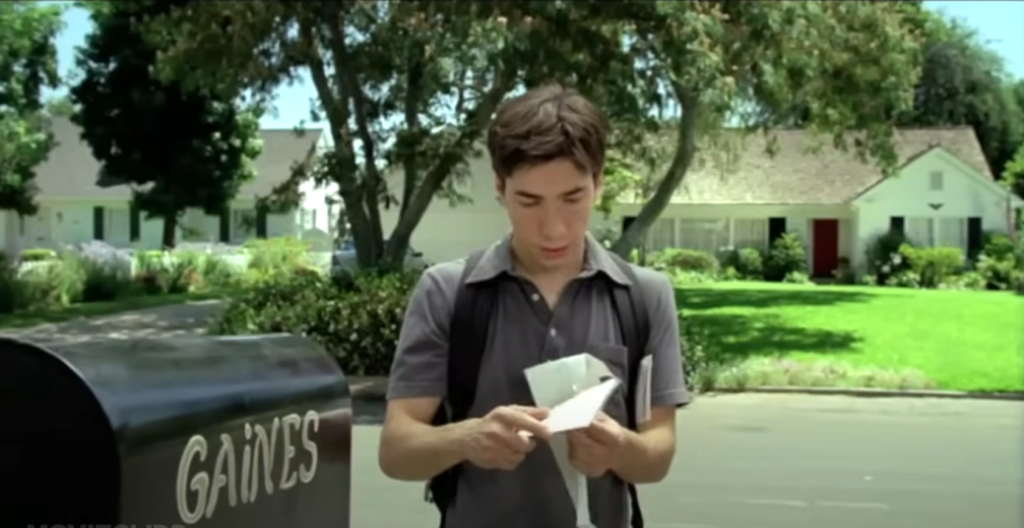The Streaming Revolution in Storytelling
Remember the days when you had to wait a whole week for the next episode of your favorite TV show? Those days are long gone. With the rise of streaming giants like Netflix, Amazon Prime, and Disney+, the way we consume stories has changed dramatically — and quickly. These platforms haven’t just changed our watching habits; they’ve completely redefined the art of storytelling itself.
We now live in a world where entire seasons are released at once, regional shows can become global hits overnight (Money Heist, anyone?), and genres that once seemed niche are gaining mainstream popularity. What’s more, storytelling has become more democratic than ever before. New voices from previously marginalized communities are being heard, experimental formats are being explored, and stories that don’t fit the traditional mold are now thriving.
But let’s not fall into the trap of seeing this as purely “good” or “bad.” Streaming has opened new doors, yes, but it’s also brought its own set of challenges. The key is to take a realistic look at how streaming is changing the way we tell stories — for better and for worse.
Breaking the Boundaries: From TV Episodes to Complex Universes
Episodic Flexibility: A New Kind of Freedom
One of the biggest advantages streaming services have brought to the table is the freedom to break away from the rigid 30-minute or 60-minute episode formats that traditional TV networks demanded. Gone are the days when every story had to fit into a predetermined time slot. Creators now have the luxury of telling a story in whatever length feels right for that particular episode. A single episode can be 40 minutes long, while the next might stretch to 75 minutes — and it works. This flexibility allows for more organic storytelling where the pacing is dictated by the narrative, not by network scheduling.
Serialized and Binge-Friendly Storytelling
Streaming has also given rise to the era of binge-watching, which has fundamentally altered the way stories are structured. Shows like Stranger Things and The Crown have embraced longer, more intricate narratives, with plots that span multiple seasons. These multi-season arcs allow for deeper character development, complex plot twists, and world-building that would be impossible in a more episodic format. Rather than being confined to single, standalone episodes, shows are now designed to be consumed as a continuous experience, with cliffhangers strategically placed to keep viewers hooked.
Impact: Depth or Drag?
But here’s the reality check: this freedom can sometimes lead to overstretched stories. Not every show benefits from having ten episodes per season, and some narratives end up feeling padded, dragging on simply because they can. The challenge for creators now is maintaining consistent quality over extended seasons without sacrificing the tight, engaging storytelling that originally captivated audiences. Are stories being dragged out to fill a season, or is the depth justified?
Embracing Diversity: New Voices and Representation
Global and Local Storytelling: More Voices, More Stories
One of the most exciting shifts that streaming services have enabled is the spotlight on global and local storytelling. With platforms catering to international audiences, shows from Spain, India, Korea, and beyond are now accessible to viewers everywhere. Look at the massive success of Money Heist or Delhi Crime — shows that might have struggled to find a global audience in the pre-streaming era are now cultural phenomena. This has opened the door for more diversity in stories, not just in terms of nationality, but also in terms of race, gender, and sexual orientation. Streaming services are actively pushing for representation, giving a platform to voices and perspectives that traditional networks often overlooked.
Realistic Impact: Representation or Tokenism?
But more representation isn’t automatically a win. With the explosion of content, there’s also a risk of superficial storytelling or tokenism — where diversity becomes a box to tick rather than an authentic part of the narrative. When creating so much content, there’s the danger that some stories might lack the depth they deserve, focusing on diversity for appearance’s sake rather than truly exploring the experiences of those communities. The challenge now is ensuring that the diverse stories being told are done with care, nuance, and respect, rather than just being surface-level inclusivity.
Viewer Control: How Algorithms Are Influencing What We Watch and Create
Algorithmic Storytelling: Are We Watching What We Want, or What They Want?
Let’s be real—streaming platforms aren’t just a library of endless options; they’re carefully curated content factories, fueled by algorithms. Every time you click on a show, pause a movie, or binge-watch an entire season, the platform is learning more about your tastes. From that data, they feed you content designed to keep you hooked—think endless cliffhangers, plot twists, and that little pop-up asking, “Are you still watching?” (Of course, you are!)
This data-driven approach has led to a trend of algorithmic storytelling. Platforms now commission shows not just because they’re great ideas, but because data suggests they’ll engage viewers. Want more dark, twisted dramas? The algorithm’s got you. Craving feel-good romantic comedies? Boom, here’s your next one. The content is designed to be addictive, engineered to hit all the right emotional beats at the exact right moment.
The Reality Check: Creativity or Formula?
But here’s where things get murky. While algorithmic recommendations seem tailor-made for our tastes, they also raise a bigger question: Is all this data-driven content making storytelling predictable? Sure, we love cliffhangers and plot twists, but are creators being pushed into a formulaic approach, churning out stories based on what worked last time, rather than what’s new and innovative? Are we sacrificing originality for the sake of binge-ability?
While algorithms help us discover content we enjoy, we run the risk of being boxed into familiar patterns. As streaming platforms continue to expand, the challenge is to balance data with creativity, ensuring we get fresh stories that don’t just tick boxes for maximum engagement.
The Death of the Traditional “Hero” Structure
Rise of Antiheroes and Complex Characters: Shades of Grey Everywhere
The traditional hero—honest, noble, and always doing the right thing—seems to be a relic of the past. Enter the age of the antihero, where characters are more morally complex than ever. Streaming platforms are taking bigger risks, and the result is a new wave of antiheroes that blur the lines between good and evil. Think Walter White (Breaking Bad), who starts off as a high school teacher and ends up a drug kingpin, or Geralt of Rivia (The Witcher), a monster hunter who’s not exactly the moral compass of his world.
These characters are far from perfect, and that’s what makes them fascinating. They don’t fit neatly into the hero-villain dynamic we’re used to. They lie, they cheat, and they make morally questionable decisions—but we still root for them because they reflect the complexities of real human nature. Their stories are more about personal struggle than saving the world, and audiences love the nuance.
Realistic Perspective: A Blurring of Morality
But there’s a flip side to this evolution. The constant blurring of morality can desensitize audiences to the consequences of these choices. When every character lives in a morally grey area, do we lose sight of ethical boundaries altogether? Are we losing the value of clear character growth? Not every story needs a perfect hero, but the endless parade of antiheroes might make us numb to the importance of distinguishing right from wrong. Streaming services have unlocked a new kind of storytelling freedom, but it’s worth asking if we’re overindulging in ambiguity without reflecting on its impact.
Streaming’s Impact on Movie and TV Economics
Low-Risk, High-Reward Model: Content as a Commodity
Streaming platforms are churning out content at an unprecedented rate, and behind the scenes, it’s all about the numbers. The economics of streaming favor low-risk, high-reward content—series and films designed to attract a massive, global audience without breaking the bank. The result? Lots of fast production cycles, minimal creative risk, and series that aim to go viral. Think of the flood of romantic comedies, reality shows, or true crime documentaries—all content designed to be quickly consumed and instantly forgotten.
This economic model prioritizes content that is easily marketable and can generate quick returns. But with this strategy comes a problem: when the focus is on quantity over quality, truly innovative and artistic content can get lost in the mix. Sure, some gems break through (The Queen’s Gambit, Parasite), but for every standout, there are countless others that feel like copy-paste productions aimed solely at getting your attention for a weekend.
Realism Check: Burnout or Breakthrough?
Is this model sustainable in the long run? Streaming platforms are constantly under pressure to produce more content to retain subscribers, but at what cost? Creative burnout is real, both for the creators trying to meet the demand and for audiences who might grow tired of endless mediocrity. The challenge is clear: can streaming services strike a balance between delivering crowd-pleasers and fostering artistic innovation? If they can’t, we may end up in a content-saturated world where quality struggles to rise above the noise.
The New Normal of Storytelling
There’s no question—streaming services have transformed the storytelling landscape, giving creators more freedom, diverse voices more space, and audiences more control. They’ve opened up new ways of telling stories that were once unimaginable. However, as with any major shift, there are trade-offs. While we get deeper, more complex narratives and previously unheard voices, we also face challenges like algorithm-driven content, morally ambiguous antiheroes, and an economic model that prioritizes fast, viral content over long-term creative value.
The key to navigating this new normal is balance. Innovation is important, but it shouldn’t come at the expense of authenticity. As streaming continues to evolve, the real question is: will the stories we tell remain rooted in the truth of the human experience, or will they drift further into formulaic, algorithm-driven creations designed solely for clicks and views?
It’s up to creators and audiences alike to demand stories that not only entertain, but also resonate with the complexities of life, reminding us why we fell in love with storytelling in the first place.



